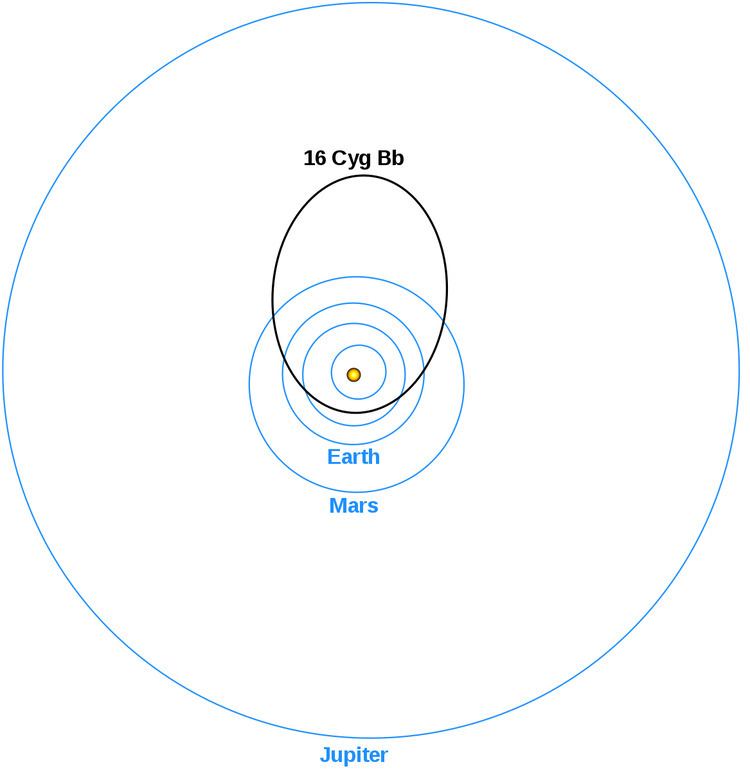[Fe/H] 0.09 | Discovery date 22 October 1996 Discovery status Published | |
 | ||
Discoverer(s) William D. Cochran, Artie P. Hatzes, R. Paul Butler, Geoff Marcy | ||
16 Cygni Bb or HD 186427 b is an extrasolar planet approximately 69 light-years away in the constellation of Cygnus. The planet was discovered orbiting the Sun-like star 16 Cygni B, one of two solar-mass (M☉) components of the triple star system 16 Cygni. It makes one revolution every 799 days and was the first eccentric Jupiter and planet in a triple star system to be discovered.
Contents
Discovery
In October 1996 the discovery of a planetary-mass companion to the star 16 Cygni B was announced, with a mass at least 1.68 times that of Jupiter (MJ). At the time, it had the highest orbital eccentricity of any known extrasolar planet. The discovery was made by measuring the star's radial velocity.
As the inclination of the orbit cannot be directly measured and as no dynamic model of the system was then published, only a lower limit on the mass could then be determined.
Orbit and mass
Unlike the planets in the Solar System, the planet's orbit is highly elliptical, and its distance varies from 0.54 AU at periastron to 2.8 AU at apastron. This high eccentricity may have been caused by tidal interactions in the binary star system, and the planet's orbit may vary chaotically between low and high-eccentricity states over a period of tens of millions of years.
Preliminary astrometric measurements in 2001 suggested the orbit of 16 Cygni Bb may be highly inclined with respect to our line of sight (at around 173°). This would mean the object's mass may be around 14 MJ; the dividing line between planets and brown dwarfs is at 13 MJ. However these measurements were later proved useful only for upper limits.
A mathematical study in 2012 showed that a mass of about 2.4 MJ would be most stable in this system. This would make the body a true planet. With these tidal effects at that age, a gas giant would be most stable.
Physical characteristics
Because the planet has only been detected indirectly by measurements of its parent star, properties such as its radius, composition and temperature are unknown.
Habitable zone
The planet's highly eccentric orbit means the planet would experience extreme seasonal effects. Despite this, simulations suggest that an Earth-like moon would be able to support liquid water at its surface over the course of a year. Due to the eccentric orbit of this massive gas giant, it is unlikely that a habitable planet could survive in this system.
